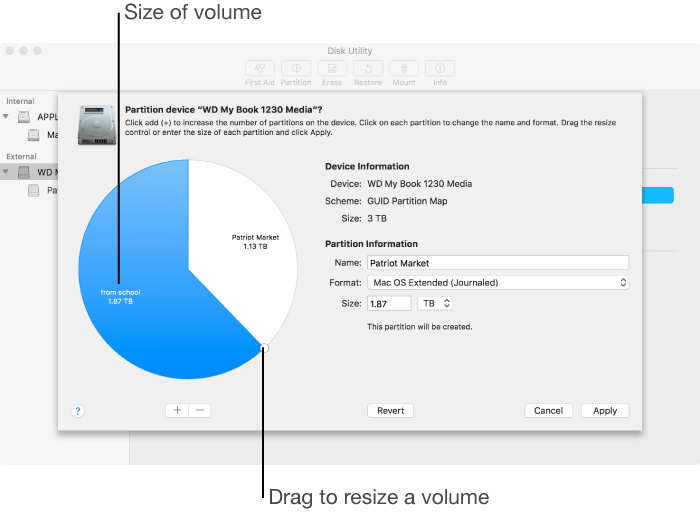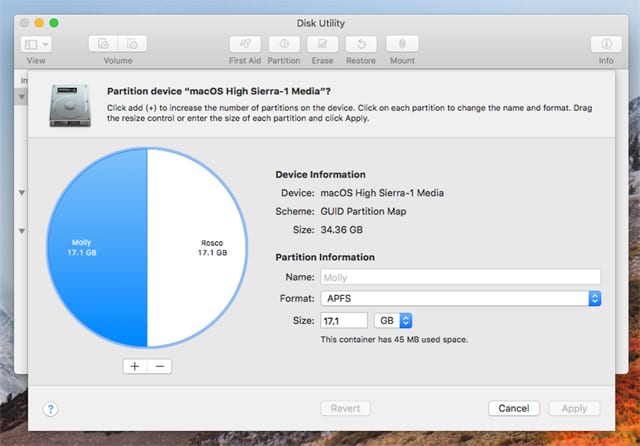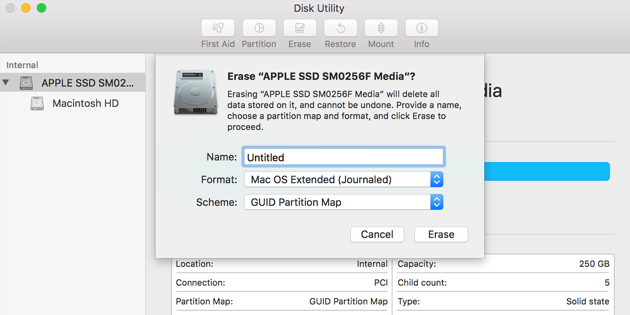
- #Disk utility for mac high sierra mac os x
- #Disk utility for mac high sierra mac os
- #Disk utility for mac high sierra install
- #Disk utility for mac high sierra update
- #Disk utility for mac high sierra full
OS: Windows 10 64-bit Minimum System Requirements. 11 (El Capitan) or later : Processor : 2. The app will scan your Mac for any redundant data, including “invisible” system files and broken login items. CPU: 1 GHz Dual Core – Intel/AMD 64-bit processor: RAM: 2 GB: Storage: 15 GB (Core & Education) or 30 GB.
#Disk utility for mac high sierra mac os
8 GB of available hard-disk space* 1280 x 768 display or better Mac device with Mac OS Version 10. PROCESSOR: 64-bit Intel® or AMD® multi-core processor Intel 6th-Gen i5 or higher, AMD 3rd-Gen Ryzen 5 or higher MEMORY: 8 GB or more of RAM (16 GB recommended) GPU: Nvidia® GeForce GTX 960 or Quadro P1000 or equivalent Minimum System Requirements: OS: Mac OS: 10. Macintosh computer with an Intel x86 or PowerPC G3, G4, or G5 processor 256 MB RAM 200 MB of free hard drive space Minimum Hardware Requirements: CPU: Intel Core i3, i5, or i7 CPU with 2 or more cores, or AMD equivalent. 12 (Sierra) Processor: 1,3 GHz with 2 cores recommended: 2 GHz or more 2 cores or more ARM processors in tablet computers are not supported.

#Disk utility for mac high sierra mac os x
hackintosh system requirements The System requirements at the time of the amount of RAM standard with the Macintosh computers were 64 MB, while the Mac OS X 10.
#Disk utility for mac high sierra update
Of course the user isn’t supposed to use any of those system-level folders and volumes, and Apple may in a future update hide them away.

Internal disks of M1 Macs are unusual in that they don’t contain a top-level EFI partition. Note that, at least in macOS 11.1, the seal on the unmounted read-only System volume is normally broken, but it’s the snapshot which is the important one: that should be sealed (unless you have broken its seal intentionally).
#Disk utility for mac high sierra full
On Intel Macs, this is given its full name, but on M1s it’s named simply Data

the writable Data volume, by default on the internal disk named Macintosh HD – Data, which is normally hidden from view at /System/Volumes and accessed via firmlinks.The snapshot is named -update- followed by its UUID, and the volume (hence its snapshot) is typically about 15 GB in size the SSV, a mounted snapshot of the unmounted read-only System volume named Macintosh HD, which forms the root of the boot file system.

The System volume is now the mounted snapshot of a sealed volume known as the Sealed System Volume (SSV):
#Disk utility for mac high sierra install
When you format a disk and install macOS on it, making it a startup or boot volume, it has a standard structure, something that has changed greatly over the last few years.


 0 kommentar(er)
0 kommentar(er)
